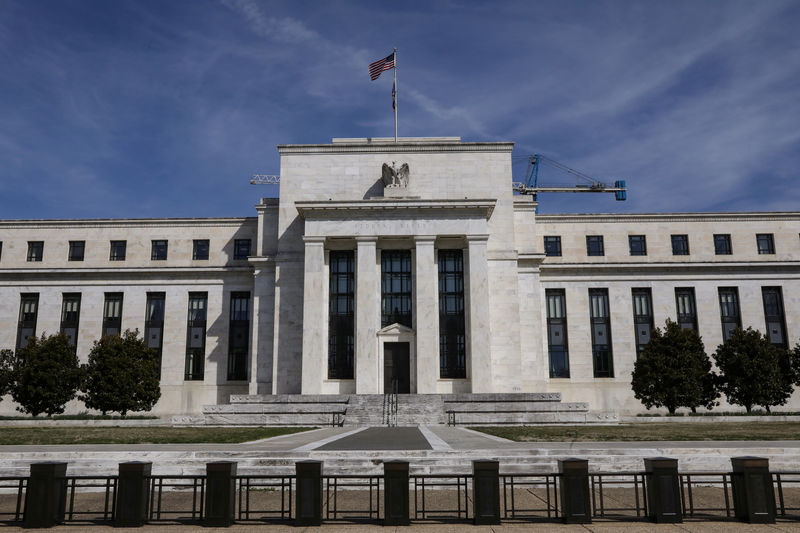By Karen Brettell
NEW YORK (Reuters) - Parts of the U.S. Treasury yield curve have begun moving in opposing directions, but closer scrutiny shows each section is signaling the same warning that the era of expanding economic growth and interest rate hikes is nearing an end.
Analysts say Europe's yield curve is also signaling economic weakness even as it holds at much steeper levels than the United States, reinforcing the notion that risks of a slowdown on both sides of the Atlantic are growing.
The Federal Reserve’s sudden pivot toward a dovish stance on future rate increases in March stunned the market and prompted a rapid repricing of Treasuries that in less than a week led to an inversion of the 3-month and 10-year Treasury curve.
The inversion, where 3-month bills return at a higher rate than the longer-dated notes, is an anomaly that in the past has preceded economic downturns by around one to two years.
While that section of the curve has since moved back into positive territory, other shorter-dated parts of the curve remain inverted. Longer-dated parts of the yield curve have since steepened, which is also consistent with the end of the economic cycle that precedes interest rate cuts and a recession.
“It’s all part of the same story that there is some anticipation of easier monetary policy in the future,” said Subadra Rajappa, head of U.S. rates strategy at Societe Generale (PA:SOGN) in New York.
The U.S. yield curve gives clues about where bond investors see the economy heading, and has historically been more accurate than not in predicting a recession. Movements between the different maturities typically follow the same pattern before a downturn.
As the Fed hikes rates in a growing economy, the yield curve will flatten, with investors pricing in higher rates in shorter-dated notes, which are the most sensitive to rate increases. Longer-dated note yields rise at a slower pace, reflecting more tepid long-term growth and inflation expectations.
When the yield curve inverts, however, financial conditions are viewed as having gotten too tight. The signal is seen as stronger if the inversion lasts over several weeks or months.
At this point, investors will begin anticipating rate cuts in the short-to-intermediate term, which results in a steeper curve between those maturities and longer-dated debt. Rate cuts in the past have followed inversions, with recessions then starting soon after the rate cuts commence.
For a graphic on Yield Curve Inversions, see - https://tmsnrt.rs/2VDvv4o
Analysts note that the yield curve machinations so far do not mean a recession is a certainty in the near term, and many economists expect we may see some stabilization in the economy before the next downturn.
In that case, the yield curve may begin flattening anew as investors push back expectations on when a downturn will occur.
Steepening in the long-end of the U.S. yield curve contrasts with German government bond yields, where longer-dated debt outperformance is continuing to flatten the yield curve.
But analysts say it would be a mistake to assume that this trend reflects confidence in the euro zone economy, where interest rates remain at zero and benchmark 10-year yields are trading in negative territory.
“The ECB (European Central Bank) has not been able to get off any hikes and only just finished QE, so the euro area looks significantly more exposed to a downturn than the U.S., just in terms of policy space to potentially respond,” said Jon Hill, an interest rate strategist at BMO Capital Markets in New York.
For a graphic on Yield Curves, see - https://tmsnrt.rs/2D7pSUW
Many investors are also focused on the 2-year, 10-year portion of the U.S. curve, which may be the most widely watched recession indicator in the Treasury market. This section has not inverted yet during this cycle, although it remains at historically very flat levels.
The onset of a recession without the inversion of this part of the curve would not be unprecedented. In the 1950s, a time that, like now, was marked by low inflation and low bond yields, there were two recessions that were not preceded by an inversion of this part of the curve, said Rajappa.
“This time around we don’t really think that twos, 10s needs to invert for us to go into a recession,” she said.
